(00:02)
Welcome to Together, We Heal. A new podcast, brought to you by SCP Health. As one of the largest healthcare partners in the country, we work to bring hospitals and healers together in pursuit of clinical effectiveness. Our programs span the entire continuum of care, including emergency medicine, hospital medicine, wellness, telemedicine, intensive care, and ambulatory care. On Together, We Heal, we will share expertise from our clinical and business leaders on how to create healthier communities, both within and outside the four walls of the hospital.
(00:37)
Today on Together, We Heal, we are going to tackle the question, how do you position your facility as an essential pillar in your community’s well being and growth? In our last episode, we discussed the difficulties plaguing clinical teams, as they deal with the impacts of disaster fatigue stemming from one of the most tumultuous years in modern times. The toll the pandemic has taken on healthcare providers is substantial, as is the toll it has taken on communities across the globe.
(01:12)
People are looking for a beacon of trust and hope as we continue to battle the next phase of COVID-19. In many cases, the pandemic has illustrated how much healthcare facilities lacked insight into the needs of their populations, and the health inequities that plague underserved groups. It also showed how meaningful a partnership between community organizations and healthcare facilities can be. We saw a beautiful outpouring of support for healthcare workers from their community members, particularly last spring. Let’s apply these lessons to build on what went right and fix what went wrong in order to engage patients in their health and improve wellbeing in the community.
(01:53)
So, how do you help your community recover and fill the gaps in access and care that were illuminated by the pandemic. Today, we are going to discuss five key strategies that will help you rebuild health in your communities. The first strategy is to identify and fill population data gaps. Social determinants of health is a buzz phrase, but it’s popular for a reason. The AHA found that 80% of health outcomes are attributable to someone’s physical environment, social determinants, and behavioral patterns. In a pandemic, those factors become even more important. It is crucial that you are instilling habits that will help construct a robust database of useful information on the members of your community. This may mean building new questions into clinician intake forms, or establishing different processes throughout the patient’s financial journey. Or serving your community members to gather feedback on how you can serve them better.
(02:51)
The second strategy is to establish deep relationships with key groups and major employers. Prioritizing outreach will position as a trustworthy partner to your community. By forming bonds with local religious, social and cultural groups, and major local employers, your staff, both clinical and nonclinical will be able to more effectively engage with and proactively care for all people in your population. In pandemic times, these relationships will also get you a step closer to knowing who is most at risk and how to help.
(03:25)
The third strategy is to educate and be educated. A key to any successful sustainable relationship is being just as willing to listen and learn as you are to teach and share. This principle certainly applies to establishing a community connection. Consider holding open sessions for feedback and sending ambassadors to the various groups in your population in order to get to know their specific concerns and needs. You should also ensure your leadership workforce and clinical teams are equipped with the appropriate training protocols and assets to help them deliver excellent care, communication and compassion to each member of your community.
(04:06)
On the flip side, you should also consider holding health fairs and free education opportunities on topics such as injury prevention, opioid addiction, diabetes management, pregnancy, vaccinations, cancer screenings, and nutrition. These events can go a long way in building health in the community and encouraging people to take ownership over their wellbeing. Even in a COVID 19 world, many of these sessions can be held virtually, even via social media or socially distanced.
(04:37)
The fourth strategy, don’t stop at discharge. For people who are already involved with your facility or system due to some type of touchpoint, think an ER visit, urgent care appointment or hospital admission. You have the opportunity to keep their attention and cultivate their loyalty. This includes doing things like improving pre-discharge communication to ensure that you’re involving the patient’s family or caretakers in the conversation. Calling patients within 24 hours after discharge to make sure they’re doing okay. Training clinicians to start noting comments the patient makes about social situations or financial stress. And connecting patients with the resources they need such as transportation, medication delivery, and the primary care physician. All of this will start to build a longitudinal view of patients’ lives as they intersect with the healthcare system.
(05:33)
Finally, the fifth strategy is, be the transparent source of truth the community craves. Amid times of chaos, like we saw in 2020, communities are flooded with concerns and questions. However, even in normal situations, there’s a lot of uncertainty and confusion around accessing, paying for, and utilizing healthcare services. Some of the questions that patients routinely ask are, “Who do I contact about how I’m feeling? What providers in my area would be right for me, and how do I schedule with them? When is my appointment, and how do I get my test results afterward? Where am I eligible to get care? What will I be charged for immediately? And what charges will there be for any potential ongoing treatment, and is it worth it? What do I do if something goes wrong?”
(06:26)
When attempting to answer questions from your community, consider combining both human and technological assets to deliver a comprehensive solution. A nurse call center can be a great way to share vaccine information and testing location assistance, or centralized scheduling and post-discharge followup. A patient portal can provide Q&A’s and symptom checkers. Social media posts can address interest in events or concerns regarding developing situations. Important announcements can be disseminated via key community group leaders. Digital flyers can be created in collaboration with local employers to keep their employees updated of all the health services at their disposal. Providing a centralized source of guidance can establish you as a beacon of support in your population.
(07:16)
This wraps up our discussion of how to position your facility as an essential pillar in your community’s well being and growth. As a healthcare leader, you may be thinking, “This is all great and sounds ideal, but right now, I am still just trying to survive and make it through this complex time.” We understand, and we know that being a leader of support for your community can be overwhelming. Join us in two weeks on Together, We Heal to learn tips on how to heal from the exhaustion that’s persisted throughout the pandemic, and how to help your clinicians and workforce recover and remain resilient so they can serve patients with the highest quality care. In the meantime, get to know us and find out what we can accomplish together by visiting our website, scp-health.com. Here you can learn how we’ve helped hospitals like yours take action to streamline hospital operations, implement cost and revenue solutions, achieve clinical quality goals and more. Again, that’s scp-health.com. See you next time.






